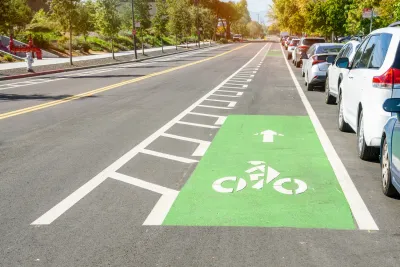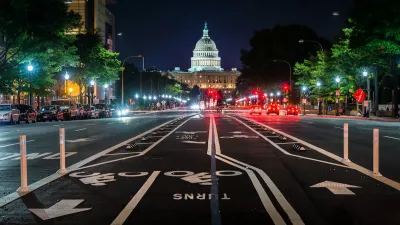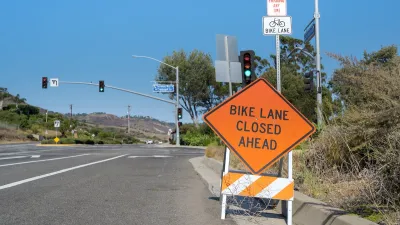Sean Duffy says there’s no evidence that bike lanes have benefits. Streetsblog — and federal agencies’ own data — beg to differ.

U.S. Transportation Secretary Sean Duffy seems to have some inaccurate ideas about bike lanes — so Streetsblog USA created an explainer that outlines the hard data, much of it from the federal government’s own agencies.
The Federal Highway Administration's own website on bike lanes says that even just adding flexible plastic posts to paint-only on-road cycle paths can reduce total crashes up to 53 percent — and of course, putting harder infrastructure like concrete jersey barriers or curbs between cars and fragile human bodies is so much better that most researchers don't even bother to study it.
Data also shows that a sufficiently robust and safe bike lane network does encourage more people to ditch cars and use bikes instead. According to the article, “study after study shows that bike lanes do not make car congestion worse— and in some cases, especially in urban areas that place them strategically, they can actually make it better.”
Disputing Duffy's claim that bike funding takes away from other transportation projects, Streetsblog highlights how little funding actually goes toward bike lanes: “Per the League of American Bicyclists, less than 2 percent of federal transportation funding is spent on biking and walking combined, amounting to $2.36 per person per year.” We hope Secretary Duffy takes Streetsblog’s advice and takes a harder look at his own agencies’ numbers.
FULL STORY: USDOT Secretary Sean Duffy Is Dead Wrong About Bike Lanes

Planetizen Federal Action Tracker
A weekly monitor of how Trump’s orders and actions are impacting planners and planning in America.

Map: Where Senate Republicans Want to Sell Your Public Lands
For public land advocates, the Senate Republicans’ proposal to sell millions of acres of public land in the West is “the biggest fight of their careers.”

Restaurant Patios Were a Pandemic Win — Why Were They so Hard to Keep?
Social distancing requirements and changes in travel patterns prompted cities to pilot new uses for street and sidewalk space. Then it got complicated.

Maui's Vacation Rental Debate Turns Ugly
Verbal attacks, misinformation campaigns and fistfights plague a high-stakes debate to convert thousands of vacation rentals into long-term housing.

San Francisco Suspends Traffic Calming Amidst Record Deaths
Citing “a challenging fiscal landscape,” the city will cease the program on the heels of 42 traffic deaths, including 24 pedestrians.

California Homeless Arrests, Citations Spike After Ruling
An investigation reveals that anti-homeless actions increased up to 500% after Grants Pass v. Johnson — even in cities claiming no policy change.
Urban Design for Planners 1: Software Tools
This six-course series explores essential urban design concepts using open source software and equips planners with the tools they need to participate fully in the urban design process.
Planning for Universal Design
Learn the tools for implementing Universal Design in planning regulations.
Heyer Gruel & Associates PA
JM Goldson LLC
Custer County Colorado
City of Camden Redevelopment Agency
City of Astoria
Transportation Research & Education Center (TREC) at Portland State University
Camden Redevelopment Agency
City of Claremont
Municipality of Princeton (NJ)





























